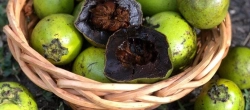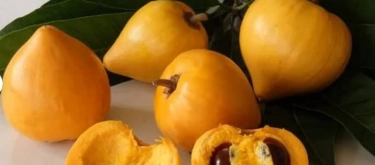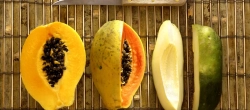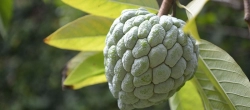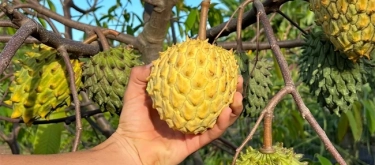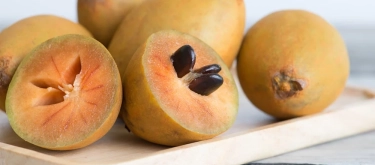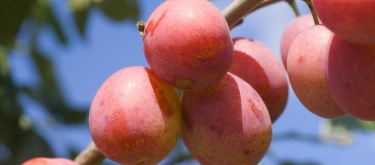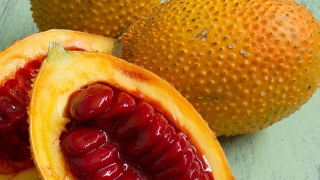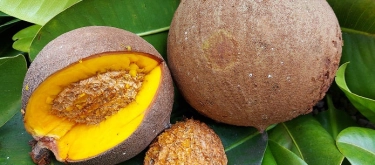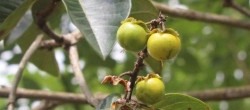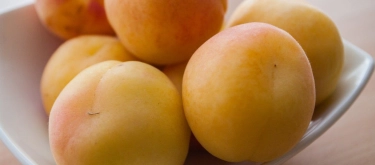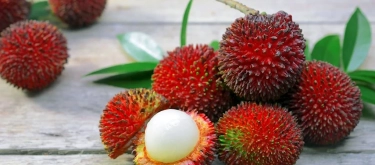Mamey Sapote: Taste Profile, Aroma, Benefits and Health Risks
Mamey sapote (Pouteria sapota) is a large, tropical fruit native to Mexico, Central America, and the Caribbean. Recognized for its vibrant orange-red flesh and sweet, custard-like flavor, mamey sapote is a beloved ingredient in Latin American cuisine. The fruit is prized not only for its rich, dessert-like taste but also for its nutritional value and versatility in both traditional and modern recipes.
Mamey sapote is naturally gluten-free, suitable for vegetarian and vegan diets, and generally well-tolerated. Allergic reactions are extremely rare but possible, especially in people with sensitivities to tropical fruits or latex. The seeds are not edible and should not be consumed.
What does Mamey Sapote taste like?
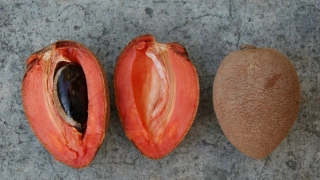
Complete Sensory Description
Mamey sapote has a rich, sweet, and creamy flavor, often described as a cross between baked sweet potato, pumpkin, and almond, with subtle notes of honey and vanilla.
The first bite delivers a luscious, dessert-like sweetness with a smooth, dense texture similar to avocado or cooked pumpkin. The flesh is fragrant and velvety, melting easily on the tongue. Hints of apricot, almond, and spice develop as you chew, adding complexity and warmth. The aftertaste lingers with mellow caramel and floral undertones, making mamey sapote a uniquely satisfying and memorable fruit.
In-depth Flavor Analysis
The distinctive taste and aroma of mamey sapote come from its high sugar content (mainly sucrose and glucose), carotenoids, and aromatic compounds including benzaldehyde (which gives an almond-like note). Natural oils contribute to its creamy mouthfeel, while subtle terpenes and phenolics add depth and warmth. The balance of sugars, acids, and volatiles creates the signature custard-like flavor. Ripeness, growing region, and variety influence both sweetness and aromatic intensity.
Culinary Uses and Forms of Consumption
Fresh mamey sapote:
Ripe mamey sapote is most often eaten fresh, scooped directly from the skin and served as a snack or dessert. It is also added to fruit salads and smoothie bowls, or lightly chilled to highlight its creamy sweetness.
Best pairings: Mamey sapote combines well with lime, coconut, honey, and other tropical fruits, as well as with vanilla, cinnamon, and mild cheeses.
Blended or pureed mamey sapote:
The fruit is commonly blended into smoothies, milkshakes (batidos), and ice creams, where its dense texture creates a naturally thick, rich base. It is often pureed for use in mousses, custards, and dessert sauces, and can be incorporated into yogurts and breakfast bowls for extra flavor and nutrition.
Cooked mamey sapote:
Mamey sapote can be baked or incorporated into pies, tarts, puddings, and cakes. It is sometimes cooked down with sugar and spices to make jams, preserves, or sweet fillings for pastries. In some cuisines, it is gently simmered with cinnamon and clove to make traditional sweets and holiday treats.
Not recommended:
The large, hard seed is not edible and must be removed. Overcooking mamey sapote can dull its delicate flavor and creamy texture. It does not pair well with highly acidic or bitter ingredients, which can overpower its sweetness.
Selection, Preparation, and Storage
Selection:
Choose mamey sapote that is heavy for its size, with unblemished, slightly rough brown skin. When ripe, it will yield slightly to gentle pressure, similar to a ripe avocado. Avoid fruits with cracks, mold, or overly soft spots.
Preparation:
Cut the fruit in half lengthwise, remove the large seed, and scoop out the vibrant flesh. Mamey sapote can be eaten as is or blended with other ingredients.
Storage:
Whole, uncut mamey sapote can be stored at room temperature until fully ripe. Once ripe, refrigerate and use within several days. Cut fruit should be kept in an airtight container in the fridge and consumed within two to three days. For longer storage, the pulp can be frozen for use in smoothies and desserts.
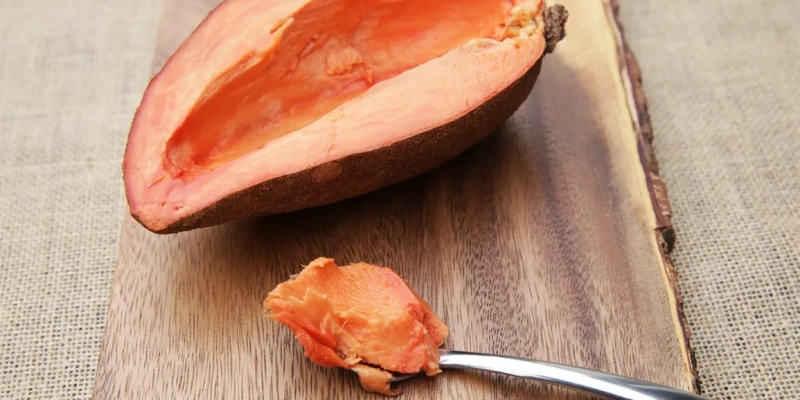
Nutritional Insights
Mamey sapote is a nutrient-rich fruit, providing a good source of dietary fiber, vitamin C, potassium, and significant amounts of carotenoids (notably beta-carotene). It contains healthy fats, natural sugars, and small amounts of B vitamins and vitamin E.
Potential benefits:
-
Supports vision and skin health due to high beta-carotene
-
Contributes to digestive health with fiber
-
Provides quick energy from natural sugars
-
Supplies potassium, supporting heart and muscle function
Historical and Cultural Significance
Mamey sapote has been cultivated in the Americas since pre-Columbian times, valued by indigenous peoples for both its taste and nutritional properties. In Cuba, Mexico, and parts of Central America, mamey is celebrated in festivals and is a classic ingredient in desserts and drinks. The fruit remains an important symbol of heritage and abundance, and traditional remedies have used the pulp for energy and nourishment.
Interesting and Curious Facts
-
The mamey sapote’s seed contains natural oils that are used in some traditional medicines and cosmetics, but the seed itself is not edible.
-
In Latin America, “batido de mamey” (mamey milkshake) is a favorite summer drink.
-
Mamey sapote trees can live for over 100 years and produce hundreds of fruits each season.
-
Despite its rich sweetness, mamey sapote is relatively low in fat compared to some tropical fruits.
-
A common misconception: the rough brown skin is edible—it is not, and only the inner orange flesh should be eaten.
Harm and Dietary Considerations
Mamey sapote is safe for most people when consumed as food. The large seed should never be eaten. Rarely, mild digestive discomfort may occur if large amounts are eaten, especially in those sensitive to fiber. The fruit is safe during pregnancy and breastfeeding when consumed in moderation.
Religious Dietary Considerations
Mamey sapote is plant-based and suitable for vegetarian, vegan, Halal, Kosher, Hindu, and Buddhist diets.
Final Thoughts & Sensory Journey
Mamey sapote captivates with its custard-like sweetness, creamy texture, and warm notes of honey and almond—delivering a truly tropical dessert experience in every bite.
Resources
-
Davidson, A. (2014). The Oxford Companion to Food. Oxford University Press. ISBN 978-0199677337
-
Morton, J.F. (1987). Fruits of Warm Climates. ISBN 978-0961018400
-
McGee, H. (2004). On Food and Cooking: The Science and Lore of the Kitchen. Scribner. ISBN 978-0684800011
-
Journal of Food Composition and Analysis, 2011, “Nutritional and Functional Properties of Mamey Sapote”
